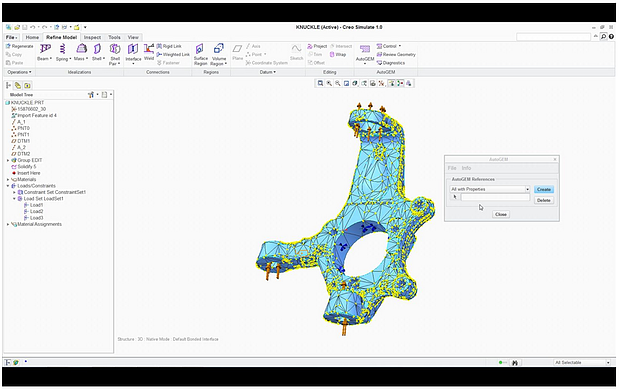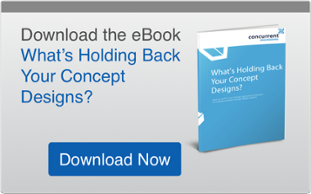
The cost of developing a product without first testing its design in a virtual environment isn’ apparent until budgets are more closely examined and increasing overheads unearthed.
Without simulation, product development will suffer from a more expensive design process, lower build quality, longer production times and - perhaps worst of all - less innovation and creativity in the design.
Modern simulation software is more capable than ever. It can simulate parts and assemblies, provide modal analysis and even assess buckling tolerance, steady-state thermal analysis and nonlinearity of materials both in plasticity and hyper-elasticity.
Anyone involved in product design will also know how vital it is to conduct tests of non-linear events, and design simulation now enables us to look at large deformation nonlinearity and non-linear contact before a single atom is put into production.
With the tools now available to product designers, it seems only fair to as: are we using them to a great enough extent? Are we reaping the benefits from design simulation or is too much still being left to chance?
#1 Lowers the cost of product development
Design simulation means fewer prototypes and saves time, effort and, as a result, a great deal of the cost during product development.
Too many products enter development far too early. Design simulation gives engineers the opportunity to find inefficiencies and poor design choices before a single machine is put to work.
#2 Reduce the lifecycle cost
It stands to reason that the longer a product design lifecycle, the more expensive the overall cost for manufacturing is likely to be, so by using design simulation, manufacturers can reduce the lifecycle cost.
A common misconception is that design analysis adds to the lifecycle time and cost, when in fact the opposite is true. By simulating designs before heading to production, a better product will be created, and that means far fewer (if any) production re-runs.
#3 Increase the ability to fulfil demand
If there’s a high level of expectancy and anticipated demand for a forthcoming product, the ability of design simulation to reduce the development lifecycle and enable the product to reach the market quicker means fewer customers will be left disappointed.
Equally, the ability to produce the best possible product without building continual iterative prototypes means demand will not only be fulfilled, but expectations exceeded, too.
#4 Ability to identify and define new markets
Design simulation encourages experimentation, and in doing so, product designers are likely to identify new opportunities for the product to be put to use in different markets.
For example, discovering that a particular tolerance can be exceeded via software simulation may indicate that the product will be suitable for other uses; opening up a world of possibilities for the product itself.
#5 Design to realise price premium
Nailing the price premium of a product enables businesses to develop competitive pricing strategies and gives marketing departments confidence that they’re not going to hit the market with something that is inconsistent with customer expectations.
Once the price premium has been identified, design simulation enables designers to build to that exact specification without the need to produce multiple prototypes or - worse - continually send out revised products into the real world to be tested.
Hitting the price premium has wide business benefits - most notably the ability to control costs and hit target margins.
Don't just guess - simulate!
Structural, motion and thermal analysis has never been easier with design simulation software. The above five benefits should encourage any product designer to give this wonderful form of pre-production planning the attention it deserves.
